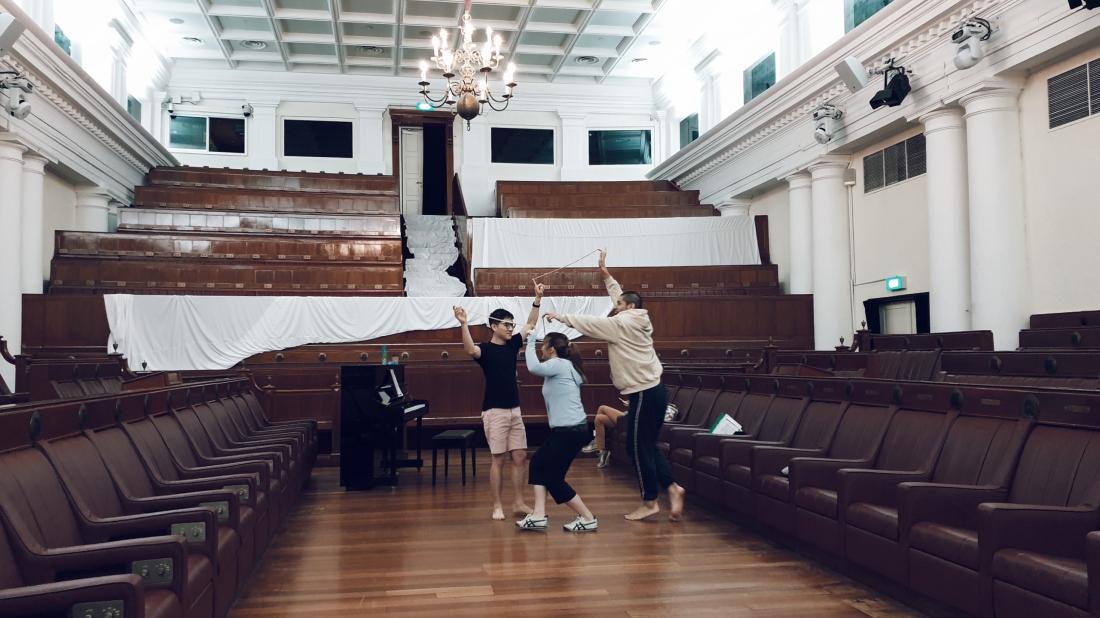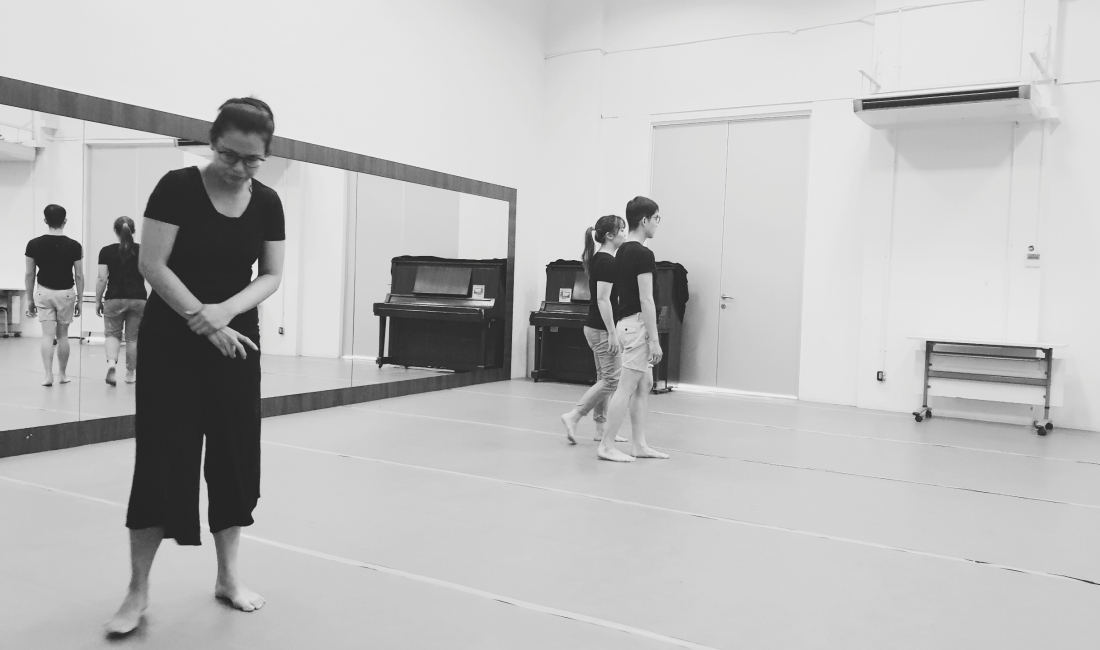Creating Oreste by Ifigenia was an experiment of sorts for me. Almost a month later, after sorting through my own thoughts, stewing in the joys and disappointments, the praise and the putdowns, sit I must to reflect on an experiment that I am not completely confident of. And with candour I proceed.
As with all projects, there were a lot of it that excited me: the chance to work in a new area, new collaborators and new processes. Opera is an art that is very close to me. I began performing in vocal arts, got into my first show because of my musicality and it was formed an unfulfilled dream at 16 that changed my life.
But there were a number of considerations that kept me up at night. What was my affinity with the work? Handel’s Oreste, which was the original commission, was not quite a sound that I had an intuitive liking for. The original libretto presented a sensibility different from contemporary audience preferences, and the addition of love interests and heightening of evil villainy made the story oddly stripped of the epic present in Euripides’ Iphigenia Among the Taurines. But in opera, much of the meaning and story is coded into musical structures. Words are often conduits rather than the crux of an opera’s power. I had to dig deep and research.
Then, it was also the space. The Chamber at the Arts House is an extremely challenging space. Praise the Muses, for thankfully, a spark of inspiration came about to flip the space, to use the spectator seats to create the spectacle. Where did this inspiration come from? I confess it was neither the music nor the story, it was simply the space. When such a strong space is given to you, it dictates a design and an interpretation.
The reality of the fact was also we had a very limited budget, so while it was creatively possible to “transform” the space, we had to be extremely crafty and ingenious to make a heritage site work.
Here’s what I wrote of the space and design
“The staging is simple, using the terrain of The Art House, Chamber, the old seat of power. It is imbued with politics and the energy demands scrutiny of ideas, sentiments and thoughts. Every inch of this deftly beautiful space calls upon an equal ready to stand trial. The inversion of the space of the observer and the observed subverts the power dynamics even more. Everyone is in full view – the performers, audience, orchestra, conductor, stage manager and director. There really is no way to hide, unless one crouches like a coward. This is Ifigenia’s arena.
With the terrain of the Chamber as the foothold, made seemingly two-dimensional by a whitewash of pristine cloth, players cut through the arena with voice and body, carving new spaces, new energies, retelling an old myth, bringing new ears for Handel’s beautiful melodies.”



So hence there were two tyrants in the room: the music to which I had to serve, and the space, in which I had to serve. Perhaps it was befitting that Orestes by Ifigenia explored themes of tyranny.
A side ramble into the tyranny of the audience. Well, there’s a reason why Orestes by Ifigenia was the first Baroque opera commission by a major Singaporean festival, the market tends to prefer the great Romantic works. We considered that the audience’s depth of appreciation would be relative to their understanding of Baroque music. Do we then pander to a common, easy understanding, or concentrate on bringing to fruition an interpretation representative of what this genre could be?
These were the staging possibilities I brought to the table:
1) A abstraction of the original opera: we respond to Handel’s work by bringing the centrality of the story back to Ifigenia. Without rewriting or adding additional music, we must ensure the that the crux of the work is preserved and presented – that Singaporean audiences get the opportunity to hear Handel performed.
2) A concert format of the opera, semi-staged but really the singers just stand and sing in front of the orchestra
3) A full staging of the original work. (Impossible because of the lack of singers, and staging resources)
I felt the strongest and most inspired by the first option.
There was another important consideration: language. In an Asian context, the language becomes even more abstract. When a language isn’t understood natively, understanding, interpretation and engagement by the audiences change. In the case of Oreste by Ifigenia, the reduction of the story and characters to just Ifigenia and Oreste breaks the linear plot line. We also retained only two recitatives, so lyrics, had no real bearing on the plot. We decided to break convention and eschew subtitles.
The audience would be forced to focus on the music, and kept away from drawing literal meaning by being divorced from a linear plot line made even more distanced by a foreign language. Such is the cruel tyranny of the director, demanding the audience (and the critic) to know the original story, the original opera and to submerged in a form of music that is abstract for contemporary sensibilities. There were program notes, and a leaflet with the English translation side by side the original Italian lyrics included. Ah, but cruel it was to have the font too small to read in a darken theatre.
At one point in the design process, I did consider including text as part of the multimedia design. It was too easy an opportunity to allow text to exist solely in subtitles. So if I did use subtitles, the hypothesis I would have wanted to test would be to alter the translation of words as each lyric is sung in repeat.
For example, Ifigenia is given this lyric for Dirti Vorrei. Follows a ABA form, with the repeat of the A demanding of ornamentation by the singer:
Dirti vorrei,
Non son crudele,
Ma tu fedele
Attendi ancor.
In English, I could have replaced a literal translation with a poetic or even political meaning with each repeat:
This I would say/speak/proclaim/exclaim/postulate,
I am not cruel.
But be faithful
And wait/attend/stall still more.
The text would become part of the multimedia design. Ah well, maybe for another collaboration.
On Staging and Working with Bodies
It is dissonant for me to see Asian bodies inhabiting White simulacrums. That has always discomforted me in a lot of the stagings I have seen in Singapore. The great operatic works stem from specific cultural (and colonial) lineages, and the stories are often Eurocentric. For an Asian body to learn a European art form is already an expression of a colonial dynamic. Admittedly, it is convenient to suspend disbelief and be colorblind in casting. However, that was too convenient.
De-colonising Handel was not a thematic drive for this work, but I wanted to free the performance from that spectre. Fortunately, the Chamber demanded a heightened body from the performers, anything pedestrian has very little chance of being read in the space. A lot of the work with the singers then was linking and activating the rest of the body with the dexterous vocal works they had to perform.
The addition of a contemporary dancer into the fold was of particular interest to me when conceptualising the work. In distilling Ifigenia and Orestes into choice songs, I thought it would help to create a counterbalance by focusing their motivations and fears onto an entity driven solely by movement. Sound counterbalanced with movement. This process was one of the most inspirational and invigorating aspect of the rehearsal for me as I had to find new ways to see.



My original idea of staging using the body was the bodies would cut and carve the space. Movement motivated by a guttural response. I believe that in the same way our contemporary sensibilities determines for us what would be initiate a guttural response, the same way audiences’ in Handel’s time would have been filtered by their own sensibilities. We had to unlock that.
During the casting process, it was immediately clear that, while open auditions were conducted, it would be extremely rare to find performers who were 1) vocally ready 2) the right voice type 3) right voice quality 5) looked the part 4) had acting training within our existing scene. In reality, these qualities should all be present but fact was that we had to prioritise what we could have. Number 4 became, “did I get goosebumps listening to him/her sing? Was s/he able to illicit a visceral response from me?”. Was this adaptation for the better or worse? I would argue better.
In addressing the demands of the Chamber, I approached the acting training using the following pathways:
1) Bringing awareness to the body – the slow walk from the Suzuki method was used; mask work was also used
2) Bringing play into the body – Isabella Chiam came into lead a two-hour workshop driven by theatre games encouraging risk-taking and awareness of body in space
3) Allowing text and sound to create movement – internalisation of the Italian and character design such that text can motivate vocal production; and allowing that vocal product and music to motivate the body. I wanted to move performances away from a score ridden with dynamic markings, into instinct and psyche creating dynamics.
I really appreciated how the singers were extremely resilient and brave in which they tackled this aspect of the rehearsal process.


Last thoughts
To be frank I think the show staged across two performances needed at least three more runs to truly settle. We had one preview and two ticketed performances. For one, it was only when the second audience was in (the opening night) that I could confirm that the audience’s journey would have been better off without Non Sempre Inventicato. A longer run would also allow the performance to mature and settle better without opening night jitters and closing night nostalgia.
So what do I think of using the adjective “successful” to measure the work and process? On one hand, we sold out quite immediately with little to no formal marketing; we mounted a work with very little resources on hand; the singers were lauded; responses from opinion leaders were good.
However, I believe that like a good stew, a work is always better after all the staging elements are allowed to mix and affect each other for at least a day or two before being served.
If I were to do things differently, I think a longer development process would have been useful, where workshopping of the work can be done, and where the singers can focus on acting training without the pressure of performance. Also, tech week was extremely challenging for various reasons, therefore, to be forthright, I do feel a tinge of regret because the experiment never really matured in the way my other works had the opportunity to.
This was an interdisciplinary process for me, and it demanded new ways of working from me and my collaborators. I hope to be able to build on what we have accomplished and to be worthy of more.
